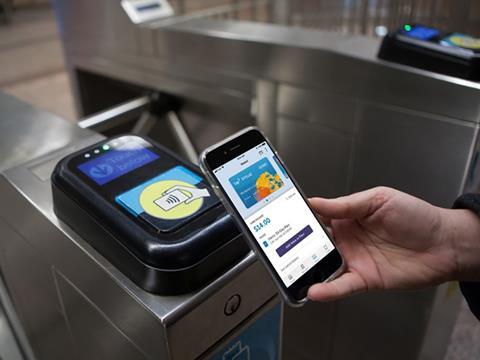
WAYFINDING: Cubic Transportation Systems is developing augmented reality technology for mobile devices with the aim of enhancing the public transport user experience for passengers with disabilities.

While transport operators are meeting the letter of accessibility laws, ‘we believe we can take it take it further, and make things easier’, CTS Director of Mobile Robert Sprogis told Metro Report International. He said improving accessibility was a ‘personal mission’, inspired by a relative who had a successful career as a mechanic despite being blinded in the Halifax explosion of 1917.
CTS’s system uses Bluetooth location beacons installed at stations and stops to provide navigation information to passengers’ mobile devices where GPS is not available, such as indoors and underground. The mobile app then combines this with a virtual 3D model of the station produced using lidar scanning data. This can be used to provide the passenger with information about the most suitable route to the nearest lift, wide ticket gate or accessible toilet, guiding them along the way with visual or audio information.
Virtual reality technology can also be used to provide architects with a representation of how stations appear to people with visual impairments, helping to optimise designs.
CTS envisages that the app could also be used to provide alerts when a train, tram or bus is approaching the required stop, or to allow passengers to request assistance in advance so staff can be ready for them as they arrive.
The aim is to empower more people to use public transport, Sprogis said, and to enabling transit operators to improve the customer experience. As well as increasing the number of potential passengers this could help to reduce the need for public authorities to fund taxis, minibuses and other travel arrangements for people who currently find train and bus services difficult to use.
The first trial deployment is planned for the USA next year.



